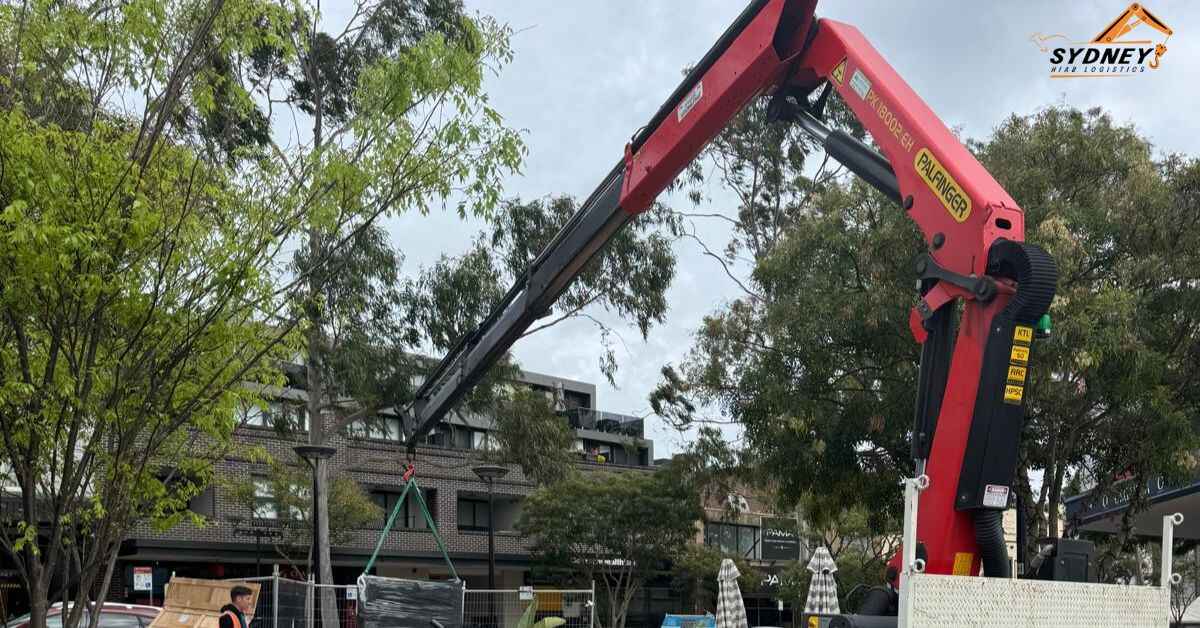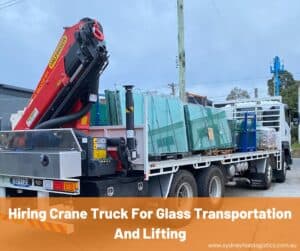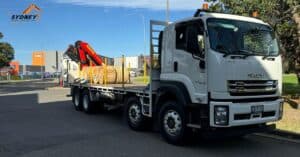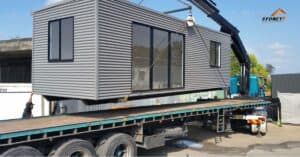Truck mounted crane are essential equipment in many industries, particularly in construction, logistics, and heavy lifting. These versatile machines combine the mobility of trucks with the lifting capacity of cranes, making them a preferred choice for many operations. However, as with any heavy machinery, the safe operation of truck-mounted cranes is crucial to prevent accidents, injuries, or damage.
Pre-operation safety protocols are designed to ensure that all aspects of crane operation are thoroughly checked and verified before use. This comprehensive checklist outlines the key areas that must be addressed to guarantee the safety of both the operator and the worksite.
1. Operator Qualifications and Training
Before beginning any operation, it is critical to confirm that the crane operator holds the necessary qualifications and certifications. Operators should have specific training on the model and type of crane they are handling, along with knowledge of general crane safety practices.
- Valid Certification: Confirm that the operator’s certification is current and covers the type of truck-mounted crane being used.
- Experience Check: Ensure the operator has experience in using cranes in similar environments or job sites.
- Refresher Training: Operators should undergo refresher courses regularly to stay updated on safety protocols and changes in operation standards.
2. Pre-Operation Walk-Around Inspection
A physical inspection of the truck-mounted crane is an essential first step in ensuring the machine’s condition is safe and operational. This step should never be skipped, as it helps identify potential mechanical issues that could lead to dangerous failures.
- Hydraulic System: Check for leaks in the hydraulic lines and ensure that the fluid levels are adequate.
- Tires and Suspension: Inspect tires for proper inflation and any visible wear and tear. The suspension system must be intact and ready to support the heavy loads.
- Outriggers and Stabilisers: Confirm that the outriggers are in good working condition, free of damage, and capable of providing proper stability when the crane is in operation.
- Load Chart Visibility: Ensure that the crane’s load charts are clearly visible and accurate to avoid overloading the crane beyond its capacity.
- Crane Cables and Chains: Inspect cables, chains, and hooks for signs of wear, corrosion, or damage that may compromise the crane’s ability to lift safely.
3. Load Capacity and Weight Calculation
Overloading a truck-mounted crane is one of the leading causes of crane-related accidents. Ensuring that the crane is not tasked with lifting more weight than it is designed to handle is a critical safety step.
- Review Load Chart: The crane’s load chart specifies the maximum lifting capacity at different boom lengths and angles. Verify that the intended load is within these safe operating limits.
- Calculate Load Weight: Accurately calculate the weight of the load, including any rigging equipment, and compare it to the crane’s rated capacity.
- Factor in Weather Conditions: Wind speed and other environmental factors can affect the crane’s stability, especially during extended boom operations. Adjust the load capacity based on these variables.
4. Setting Up the Crane on Site
The positioning and stabilisation of the truck-mounted crane on the worksite are critical for safe operation. Failing to stabilise the crane can lead to tip-overs, swinging hazards, or other incidents.
- Ground Conditions: Ensure that the ground where the crane will be positioned is firm and level. If the ground is soft or uneven, use timber mats or other supports under the outriggers to distribute the load.
- Clear Area: The worksite should be cleared of any unnecessary personnel and equipment to reduce risks.
- Check for Obstructions: Identify and avoid overhead power lines, buildings, or other obstructions that could interfere with crane operations. Maintain a safe distance from all hazards.
- Level the Crane: Use the crane’s leveling indicators to ensure it is perfectly level. A tilted crane is highly susceptible to tipping over under heavy loads.
5. Boom and Jib Inspection
The boom and jib are the primary lifting arms of the crane, and their integrity must be thoroughly checked before operation.
- Boom Extension Check: If the boom or jib is extendable, ensure that all sections extend and retract smoothly without jerking or sticking.
- Structural Integrity: Inspect the boom and jib for any cracks, dents, or other signs of damage that could compromise their structural integrity.
- Boom Angle Limiters: Ensure that any angle limiters or stop mechanisms are working correctly, especially in cranes with telescopic or articulating booms.
6. Safety Systems Check
Modern truck-mounted cranes are equipped with various safety systems designed to prevent accidents. These must be thoroughly checked to ensure they are functioning properly.
- Anti-Two Block System: The anti-two-block device prevents the hook from being drawn into the boom tip, which can cause damage and hazards. Verify this system is operational.
- Overload Protection System: Check the overload protection system to ensure it will engage and prevent the crane from lifting a load beyond its capacity.
- Emergency Stop Controls: Test the emergency stop controls both inside and outside the cab to ensure they are functioning properly and can halt operations in case of an emergency.
7. Communication and Signaling
Effective communication between the crane operator and the ground crew is essential for smooth and safe operations. Prior to beginning the lift, the following communication protocols should be in place:
- Signal Person Designation: A qualified signal person should be designated to communicate with the crane operator, especially when visibility is limited.
- Radio Equipment Check: If radios are being used, test the equipment to ensure that it functions properly, without static or interference.
- Hand Signals Knowledge: Both the operator and signal person must be familiar with standard hand signals, as detailed in applicable regulations.
8. Final Functional Test
Before commencing the actual lift, a final operational test of the crane is recommended to ensure all systems are functioning smoothly.
- Boom Movement: Operate the boom in various directions and at different angles to ensure smooth and unrestricted motion.
- Load Movement: Lift a small test load to check the crane’s responsiveness, stability, and control mechanisms.
- Brake Functionality: Test the brakes for both the crane’s rotation and truck movement to ensure they can hold the load securely.
9. Site-Specific Considerations
Each job site will present its own unique challenges and hazards. Therefore, the checklist should include any site-specific safety protocols based on the nature of the operation and the environment.
- Weather Forecasts: Be aware of any weather conditions, such as high winds, rain, or storms, that could affect crane operations.
- Worksite Layout: Consider the layout of the worksite, including traffic, personnel locations, and any high-risk zones, and adjust the crane’s setup accordingly.
- Emergency Plans: Ensure that emergency response plans are in place and understood by all personnel on-site in case of an accident or crane malfunction.
Conclusion
By following these detailed pre-operation safety protocols, the risk of accidents, equipment failure, and injuries can be significantly reduced when operating truck mounted crane. Safety begins before the crane is even turned on, and a comprehensive checklist can ensure that every aspect of the operation is ready to proceed safely and efficiently. Remember, consistent adherence to these protocols not only protects workers but also preserves the machinery and enhances productivity on the job site.
Need to hire a HIAB truck in Sydney? Look no further!
At Sydney HIAB Logistics, we provide reliable and efficient HIAB truck hire tailored to your needs. Whether you’re moving heavy equipment, construction materials, or anything in between, our skilled operators and well-maintained fleet are here to help.




